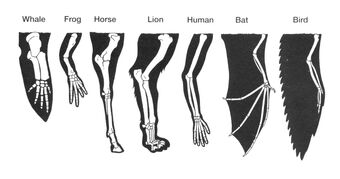
Homologous and Vestigial Structures

Vertebrate anterior limb
Homology is a fundamental concept to the study of comparative biology, and a strong evidence in favor of evolution. It was first defined by Richard Owen in 1843 (Hall, 2012)
Homology refers to similar structures (or genes, or behaviors) of different organisms due to the same embryological origin. Those structures can or cannot perform the same function.
.Examples
Vertebrate anterior limbs
Contrast with:[]
Analogy and homoplasy
References:
- Hall, B. K. (2012). Homology, Homoplasy, Novelty, and Behavior. Developmental Psychobiology,
http://bytesizebio.net/wp-content/uploads/2009/07/homology-limbs.jpg